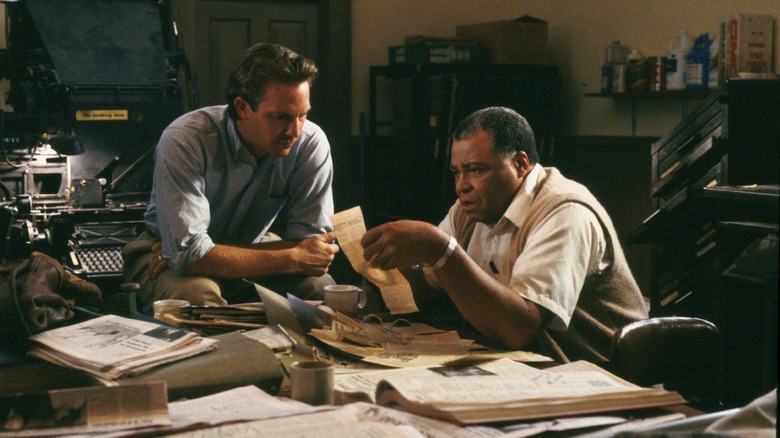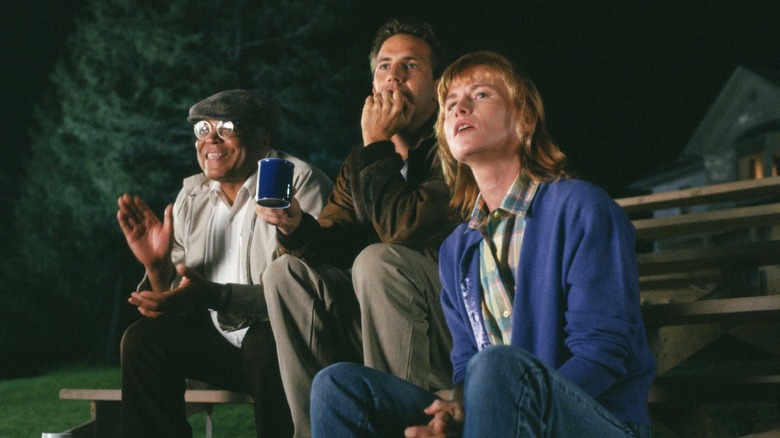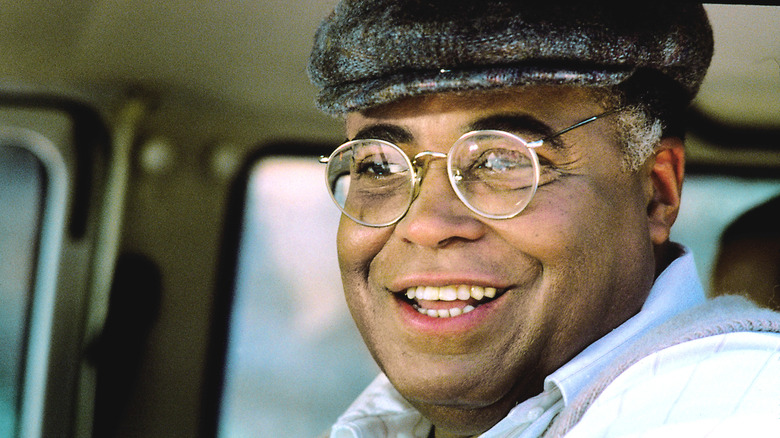James Earl Jones' Field Of Dreams Character Terence Mann Is Based On A Real Person
Even in death, the late, great James Earl Jones remains a "Star Wars" legend, a Broadway icon, one of the most gifted orators in modern history, and a true titan of Hollywood. But if you're a baseball fan — specifically a baseball movie fan — he'll always be Terence Mann from "Field of Dreams." Jones' performance as the reclusive author-turned-ghost-baseball-observer is a major anchor for the classic film, grounding the loftier emotional beats. The movie might have felt even more grounded if the character hadn't been changed from the version of the character in the novel "Shoeless Joe," on which "Field of Dreams" is based.
In W.P. Kinsella's 1982 book, the writer sought out by protagonist Ray Kinsella isn't some made-up person, but J.D. Salinger, best known as the author of "The Catcher in the Rye." Though Salinger had already pulled back from public life when Kinsella's novel was published, he was still very much alive, living until 2010. However, while Kinsella got away with using the actual writer in his book, the 1989 film adaptation opted to play things a little safe for fear of legal repercussions.
"We didn't even consider keeping Salinger as a character for the movie," writer-director Phil Alden Robinson told Joe Leydon of The Moving Picture Show in 1989. "Field of Dreams" kept the real baseball players used in the novel, including Shoeless Joe Jackson himself, of course, but it's probably for the best that Robinson created an entirely distinct character to take Salinger's place.
J.D. Salinger nearly sued over his portrayal in Shoeless Joe
The decision to excise J.D. Salinger from "Field of Dreams" wasn't made based on pure speculation that the author might be upset. According to W.P. Kinsella, he nearly got taken to court over the original novel's portrayal of Salinger and was warned harshly about any subsequent adaptations.
"His lawyers wrote my publisher's lawyers saying he was outraged and offended to be portrayed in the novel and they would be very unhappy if it were transferred to other media," Kinsella said in an interview with Maclean's. "Which was legalese for, 'We really don't have enough to sue you, but we'll try to pee on your parade if you try to take it to television or the movies.'" Clearly, Phil Alden Robinson and Universal Pictures took the threat seriously, though Kinsella seemed to dislike the fact that the character was changed. "The movie people were too chicken," the author told Maclean's. "So they created Terence Mann."
It makes sense that Kinsella would prefer his own version, especially as a self-professed huge fan of Salinger's work. That said, legal ramifications could have robbed us of a ghost baseball classic, as well as a standout movie character in Terence Mann, so things all seem to have worked out for the best.
Replacing J.D. Salinger may have made Field of Dreams better
Had Phil Alden Robinson stuck with the J.D. Salinger idea from "Shoeless Joe," Salinger could have taken legal action, but audiences also could have missed out on an all-time-great James Earl Jones performance. As a Black man, Jones would never have been cast for the role if the studio was looking for an actor who could pass as Salinger.
Jones makes Mann's disappearance into the cornfield at the end of "Field of Dreams" a deeply impactful moment, and without his particular delivery of Mann's astute, soothing commentary, the movie just wouldn't be the same. Fortunately, attempts at remaking "Field of Dreams" have fizzled in more recent years, saving us from watching some new actor struggle to fill Jones' impossibly huge shoes. When it comes to rebooting such a classic, the sentiment "if you build it, they will come" doesn't really hold true in the same way. After all, the film's success is more about the emotion than how it grounds itself in the world.
As Jones told Joe Leydon in 1989, "The movie insists that you participate with your heart more than your mind, more than your critical facilities."


